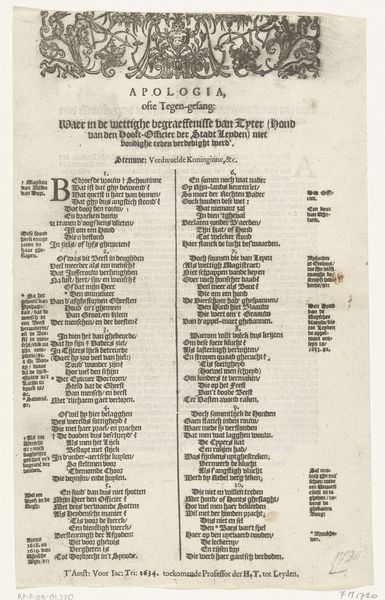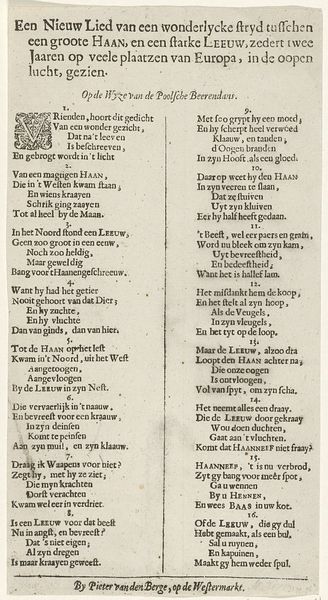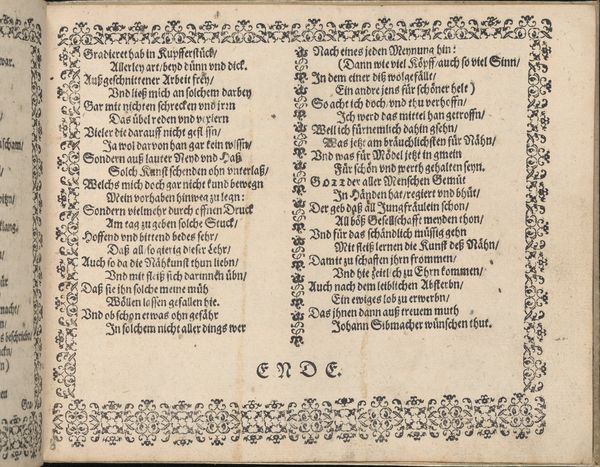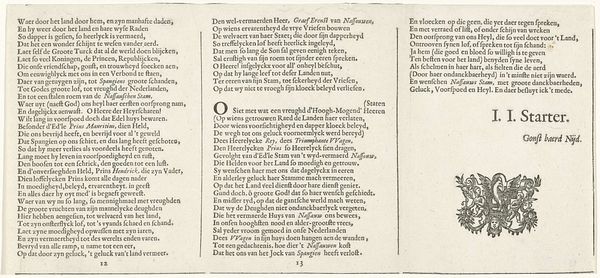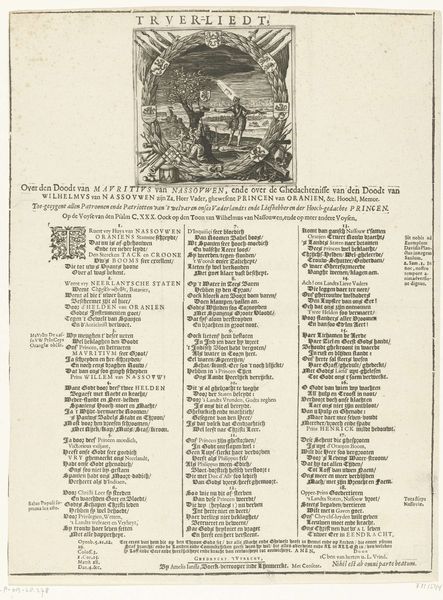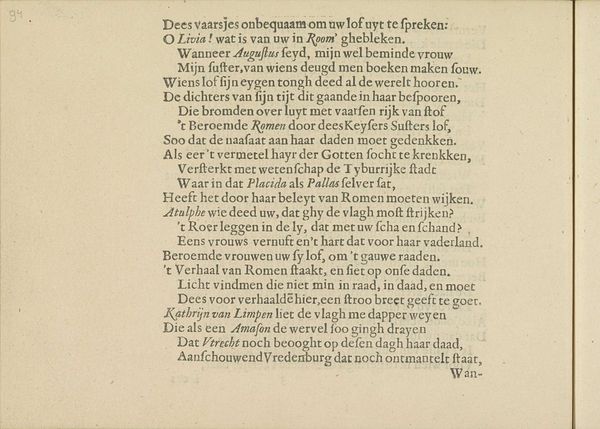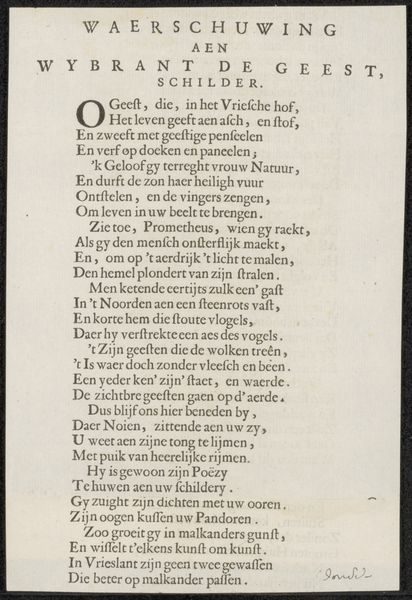
Lied ter ere van de verovering van 's-Hertogenbosch door Frederik Hendrik, 1629 1629
0:00
0:00
print, textile, typography
#
dutch-golden-age
# print
#
textile
#
typography
#
history-painting
Dimensions: height 226 mm, width 188 mm
Copyright: Rijks Museum: Open Domain
Curator: Today we’re looking at "Lied ter eere van de verovering van 's-Hertogenbosch door Frederik Hendrik, 1629," or "Song in honor of the conquest of 's-Hertogenbosch by Frederik Hendrik, 1629" by Jan van der Veen, a Dutch Golden Age print from 1629. It seems to be text printed on fabric or textile. Editor: My immediate impression is that this feels incredibly celebratory, like a proclamation or the lyrics to a joyous song. The texture of the fabric adds a sense of communal experience to it, like something that would have been displayed publicly. Curator: Yes, it's definitely intended to evoke a sense of pride. 's-Hertogenbosch was a major Catholic stronghold, and its capture by the Dutch Republic was a pivotal moment in the Eighty Years' War. Van der Veen’s lyrics link this victory to broader cultural and political themes: the rise of the House of Orange, the defeat of Spanish tyranny, and the flourishing of Dutch identity. We can examine this piece as a symbol of power and its consolidation, which is, I believe, an insightful position, and maybe explore the gendered aspects of war as well? Editor: Exactly, the visual language—even though primarily typographic—contributes a lot. Notice how the elaborate borders seem to frame and almost protect the text, lending an aura of authority to it. Plus, there are mythological allusions: "Bataviersche Bulofs-Bey" – a clear nod to classical imagery—positions the Dutch as rightful heirs to Roman strength and virtue. The victory isn’t just about land or religion, but about reclaiming a legacy. What's interesting about the cultural memory tied into such symbols is that war has had a huge impact on women through history; the fact that there is reference to them in verse 5 may point to a gendered dynamic, what do you think? Curator: Indeed! The representation of women as both the "Boffche Maecht" or women of 's-Hertogenbosch and "Hollants Bruyt" - bride of Holland creates a dichotomy in terms of a national and feminine construct. And this type of rhetoric and the feminine form is employed to signify purity, territory, belonging, or the promise of new beginnings, right? Van der Veen does not shy away from associating feminine strength and national fortitude in the era’s broader societal landscape. Editor: A fascinating layering of symbols and history. The image, even in its seemingly simple form, invites a complex engagement with ideas of nationhood, historical destiny, and even gender roles. Curator: It certainly moves beyond a mere historical document to encapsulate the interwoven political and cultural identities, as revealed in 17th-century Dutch society.
Comments
No comments
Be the first to comment and join the conversation on the ultimate creative platform.
